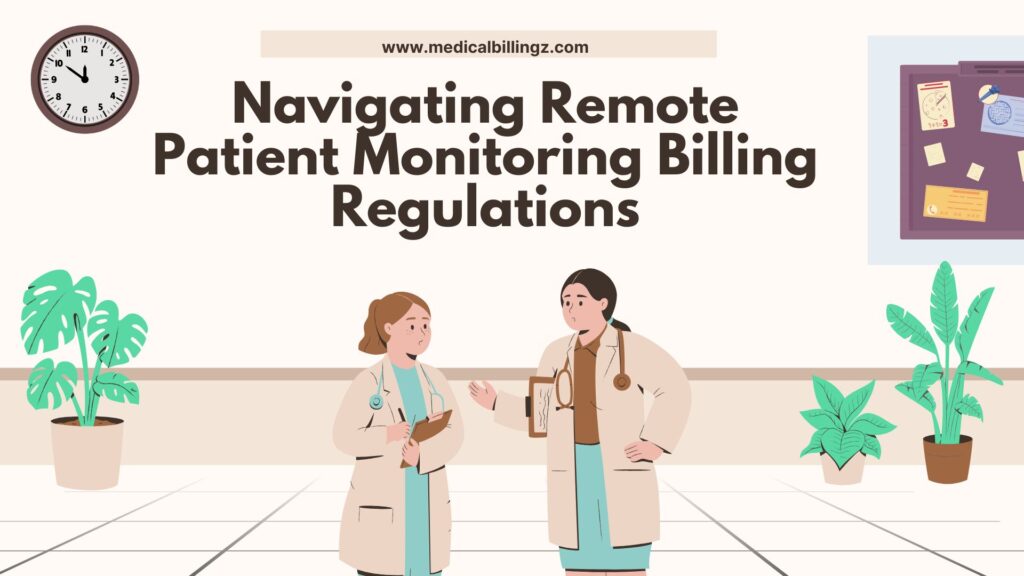The healthcare industry is rapidly evolving, with technology playing a pivotal role in enhancing patient care. One such innovation is Remote Patient Monitoring (RPM), which allows healthcare providers to monitor patients outside traditional clinical settings. However, understanding the billing process for RPM is crucial to maximizing its potential. This article provides a detailed overview of Remote Patient Monitoring Billing, its importance, components, and guidelines, ensuring healthcare professionals can navigate the complexities of RPM reimbursement.
What is Remote Patient Monitoring Billing?
Remote Patient Monitoring Billing refers to the process of documenting and submitting claims for services provided under RPM programs. It ensures that healthcare providers are reimbursed for monitoring patients’ health data, such as vital signs, through connected devices. Proper billing is essential for maintaining financial sustainability in RPM programs while complying with regulatory guidelines.
Importance of Remote Patient Monitoring Billing
- Streamlined Reimbursement
Accurate billing ensures that healthcare providers receive timely payments for their RPM services. - Compliance with Regulations
Adhering to billing guidelines helps avoid penalties and legal issues. - Sustainability of RPM Programs
Efficient billing supports the long-term viability of remote patient monitoring initiatives. - Enhanced Patient Care
Proper reimbursement allows providers to invest in better technologies, improving patient outcomes.
Key Components of Remote Patient Monitoring Billing
1. RPM Services Covered
- Collection and interpretation of physiological data.
- Patient-initiated communications.
- Device setup and education.
- Monthly data review and management.
Learn more about Simplified Remote Patient Monitoring Billing for Providers
2. CPT Codes for RPM Billing
RPM billing relies on specific Current Procedural Terminology (CPT) codes:
- 99453: Device setup and patient education.
- 99454: Data transmission and monitoring.
- 99457: First 20 minutes of remote monitoring and patient interaction.
- 99458: Additional 20 minutes of remote monitoring.
3. Eligibility Criteria
- Patients with chronic or acute conditions.
- Use of FDA-approved monitoring devices.
- Data collection must be automatic and meet a minimum threshold.
Guidelines for Effective Monitoring Billing
1. Understand Payer Policies
Each payer, such as Medicare or private insurers, may have unique requirements for RPM reimbursement. Providers must review these policies regularly.
2. Maintain Accurate Documentation
Detailed records of services rendered, patient interactions, and device usage are critical for billing.
3. Ensure Compliance with CPT Codes
Use the correct CPT codes for each aspect of RPM services. Incorrect coding can lead to claim denials.

4. Educate Staff
Training administrative and medical staff on RPM billing procedures helps reduce errors and ensures smooth operations.
Challenges in Remote Patient Monitoring
1. Complex Regulations
Navigating Medicare and insurance rules for RPM can be daunting.
2. Claim Denials
Errors in coding or documentation often lead to rejected claims, impacting revenue.
3. Cost of RPM Devices
Although reimbursable, the upfront cost of FDA-approved devices can be a barrier for smaller practices.
4. Patient Compliance
For successful billing, patients must use monitoring devices consistently and accurately.
Tips for Successful Patient Monitoring Billing
- Leverage Technology
Utilize advanced billing software to streamline processes and reduce errors. - Stay Updated on Policies
Healthcare regulations change frequently; staying informed is crucial for compliance. - Work with Experts
Consider outsourcing billing tasks to experts specializing in RPM services. - Monitor Performance Metrics
Regularly analyze billing data to identify areas for improvement.
How to Navigate Complex Regulations in Remote Patient Monitoring Billing?
Benefits
1. Improved Financial Health
Accurate billing ensures steady revenue flow for healthcare providers.
2. Better Resource Allocation
With proper reimbursement, providers can invest in training and advanced RPM devices.
3. Enhanced Patient Engagement
Billing for time spent interacting with patients fosters stronger provider-patient relationships.
4. Scalable RPM Programs
Efficient billing practices enable healthcare organizations to expand their RPM initiatives.
| Aspect | Details |
|---|---|
| CPT Code 99453 | Device setup and education |
| CPT Code 99454 | Data transmission costs |
| CPT Code 99457 | 20-minute monitoring sessions |
| CPT Code 99458 | Additional 20-minute blocks |
| Eligibility Criteria | Chronic/acute conditions |
| FDA Device Requirement | Mandatory for RPM billing |
Conclusion
Remote Patient Monitoring Billing is a cornerstone of modern healthcare, enabling providers to leverage technology for better patient outcomes while ensuring financial sustainability. By understanding the components, guidelines, and challenges of RPM billing, healthcare professionals can optimize their reimbursement processes, maintain compliance, and focus on delivering quality care. Staying informed and adopting best practices in billing can pave the way for successful RPM programs that benefit both providers and patients alike.
FAQS
How can healthcare providers ensure successful RPM billing?
Providers can ensure successful RPM billing by:
- Understanding payer policies.
- Maintaining accurate documentation.
- Using the correct CPT codes.
- Training staff on billing practices.
- Leveraging billing software or outsourcing to experts.
Why is compliance important in Remote Patient Monitoring Billing?
Compliance is critical to avoid claim denials, legal penalties, and financial losses. Adhering to regulatory guidelines ensures smooth reimbursement processes and supports the long-term success of RPM programs.
What role do FDA-approved devices play in RPM billing?
FDA-approved devices are mandatory for RPM billing. These devices ensure accurate data collection and transmission, meeting the requirements set by payers like Medicare and private insurers.
Can RPM services be billed for every patient?
No, RPM services are typically reimbursable for patients with conditions that require continuous monitoring. Eligibility criteria vary by payer and should be reviewed before offering services

